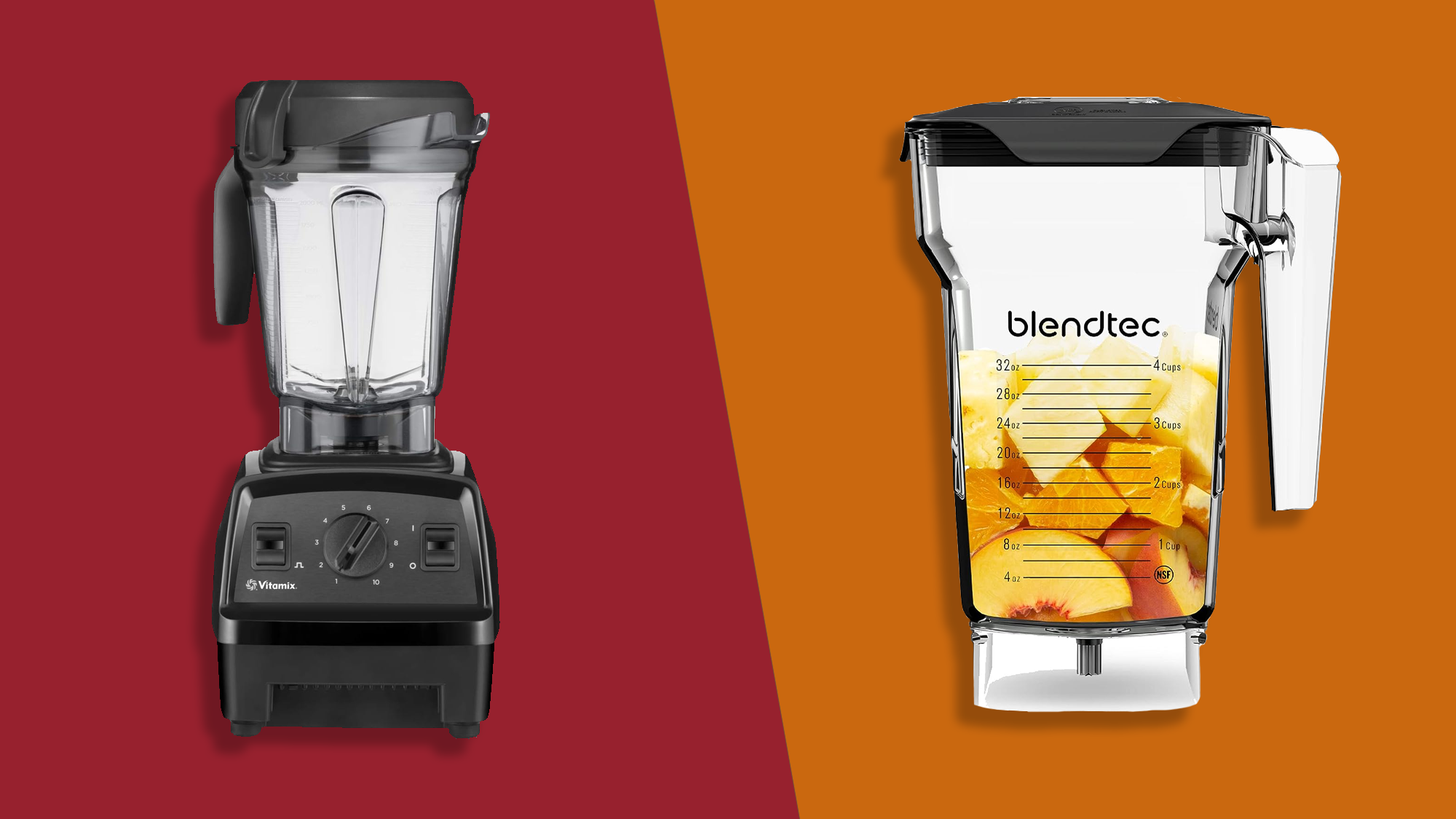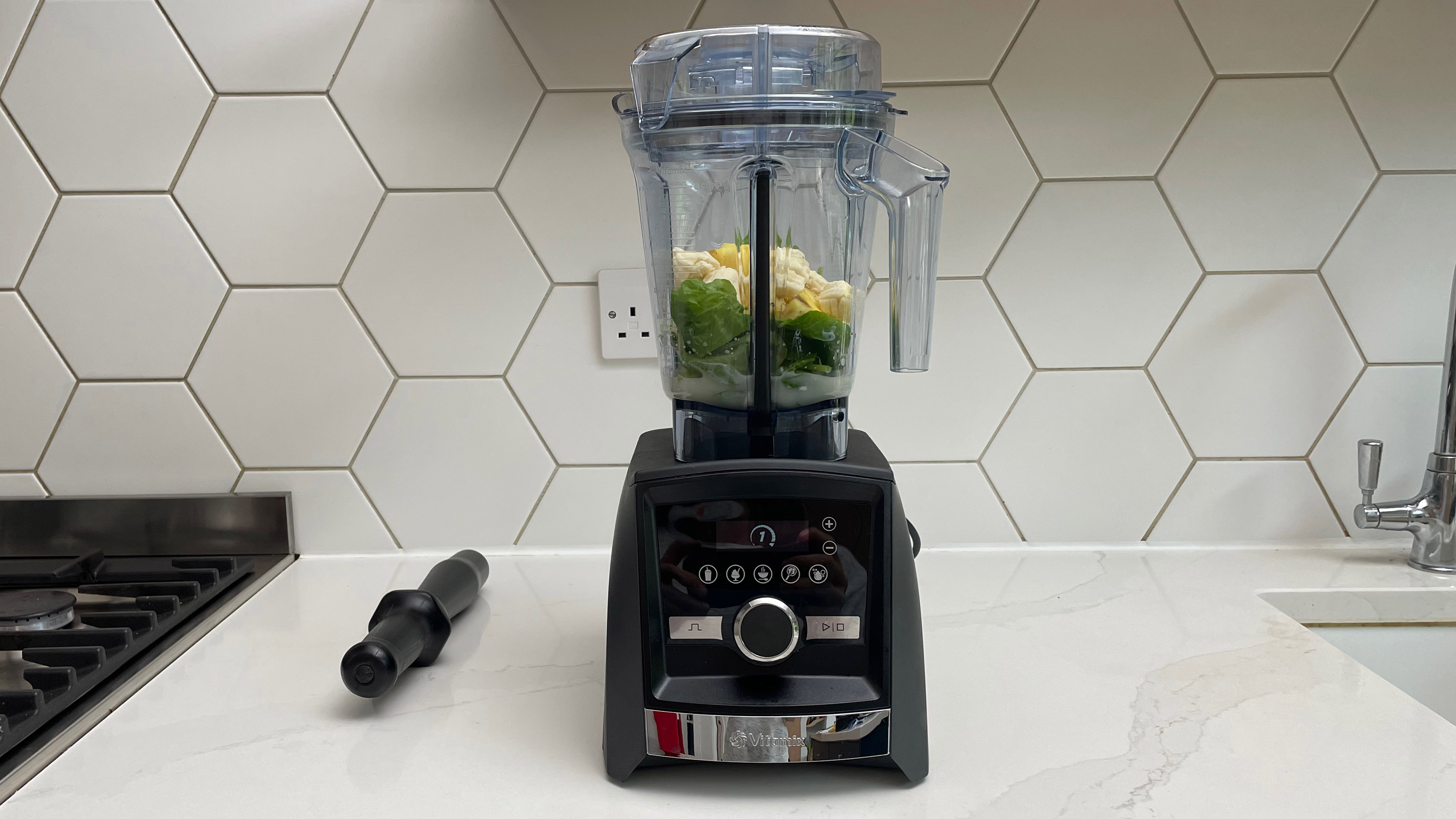
Blenders are the best appliances for making lump-free smoothies and sauces. But there are hundreds of models to choose from. If you’re seriously into blending, you’ll need one of the best blenders from a premium blender brand like Vitamix or Blendtec.
Both these brands offer blending appliances that wipe the floor with your more run-of-the-mill cheap and cheerful blenders. The Vitamix Ascent 3500 currently holds the title of best premium blender in our best blenders roundup.
But both of these brands are expensive and it’s tricky to dissect the differences and figure out which is best for you. So, here we’ve put them head-to-head to see how they compare in terms of price, range, features and accessories.
And if you’re not sure whether it’s a blender or a food processor that you need, check out our blenders vs food processors article to find out more.
Vitamix vs Blendtec: range
Blendtec splits its blenders into three distinct ranges, the Classic series, the Designer series and the Pro series. The Classic series is the entry level range and includes two blenders, the Classic 575 and the Total blender. Both offer push button controls and a range of pre-programmed cycles. Of the two, the Total blender is the more advanced with 10 speeds and a wider choice of programs.
The Designer series comprises the Designer 625, the Designer 650 and the Designer 725. All of these are available in the UK, but in the US you can only get the 650 , whilst in Australia you can choose between the 625 and the 725.
The Designer series offers the same motor power as the classic series, with the exception of the 725 which is more powerful. The main upgrades from the Classic blenders include the brand's SmartBlend technology along with a touch interface and capacitive touch sliders for speed. Furthermore, this range comes in a variety of colors as well as metallic and has an elevated streamlined design.
At the top end of the Blendtec range sits the Pro series, a range of just two blenders; the widely available Pro 800 or the Pro 750 which appears to be only available in the UK. The Pro 800 is the brands most advanced domestic blender and it claims to be the worlds quietest blender too.
Vitamix blenders are also divided into various ranges. The Ascent and Explorian ranges are the most widely available. In the US there’s a Propel series and Legacy series, meanwhile the Venturist blender appears to be a standalone model and is available in the US and the UK.
The Ascent series is the largest and most premium range and features the A3500, the A3300, the A2500 and the A2300. Not every model is available worldwide, but the beauty of this range is that the self-detect technology means you can buy and use various accessories with them, including small blending bowls and personal blending cups.
The Explorian series is a range of two blenders; the E310 and E320 with the E310 being the most widely available worldwide. The E310 blender features a smaller capacity than the models in the Ascent series. And the Explorian series lacks the range of optional accessories offered for the Ascent series.
Bridging the gap between the Ascent series and the Explorian series is the Venturist blender, featuring the large capacity seen in the Ascent series along with the self-detect technology, but at a slightly lower price tag.
As the name would suggest, the Legacy series features older models and the Propel series offers blenders with preset blending programs. But unlike the Blendtec blenders, there is some overlap between the Vitamix ranges and it can at times be tricky to figure out exactly what sets certain models apart.
Vitamix vs Blendtec: price
Blendtec blenders start at $380/ £449/ AU$799 for the Classic 575 which is one of the brand's most basic models. The mid-range Designer series starts at $450/ £449/ AU$849, but prices vary depending on which model you choose, and the various colors and finishes are also priced differently.
The most expensive Blendtec blender you can buy is the Pro 800. It’ll set you back for $800/ £1,299 / AU$1,899 which most people would consider quite an eye-watering price for a blending appliance. And you’ve got to be seriously into liquidizing things to justify forking out this much cash for a blender.
The Vitamix E310 costs $350/ £429/ AU$699 and is the cheapest Vitamix you can buy in the UK and Australia. In the US however, there’s a very basic entry-level model called the Vitamix ONE which costs just $250.
Since it’s the home of Vitamix, in the US there are also reconditioned blenders available on the website, so you can bag yourself a Vitamix at a slightly reduced cost if you keep an eye on the site.
At the top end of the scale, the Vitamix Ascent A3500 will cost you $650 / £749 / AU$1,699. So, it’s slightly cheaper than the top-of-the-range Blendtec, but still has an eye-watering price tag. And that’s not all; Vitamix offers bundles that include some of the optional accessories such as blending jars, personal cup blenders and even a food processor attachment.
These bundles vary by country but can go as high as $900/ £849/ AU$2,409 and that’s before you start adding optional extras to your cart. But it must be noted that if you opt for a bundle, you are significantly increasing the versatility beyond what you can get from Blendtec.
Vitamix vs Blendtec: features
Blenders aren’t usually packed with features, so the differences come down to things like the available speed levels and the preset programs on offer.
Generally Vitamix blenders offer around 10 blending speeds, controlled via a dial on the front of the blender. The Blendtec Designer range allows you to control the speed via touch sensitive slider controls and while the speed options vary, they generally have 6-8 speeds.
The exception is the Blendtec Designer 725 which offers an impressive 100 speed touch slider, which is probably the largest number of speed options we’ve seen on a blender. Oddly, it costs far less than the more expensive top-of-the-range Blendtec Pro which only offers 11 speeds. Which does somewhat beg the question: does anyone really ever need 100 blending speeds?
Neither brand goes overboard on the amount of preset blending programs they offer. Even the most premium Vitamix, the A3500, only has five blending programs and one of those is a cleaning program.
The vast majority of Vitamix models don’t offer preset programs at all - they keep the controls very simple. Conversely, all Blendtec blenders offer preset blending programs. There are usually between 4-6 options for foods like smoothies, batters, ice cream, mixed drinks and even hot soups.
The standout feature of the Vitamix blenders is the self-detect technology. It’ll detect what type of accessory you’re using and adjust the settings and speeds accordingly. Blendtec’s SmartBlend technology is slightly different, however. Blendtec says these blenders can sense and identify potential problems such as loading errors, overheating, or air pockets – and then tell users how to fix them.
Both brands offer models with digital timers, but all Blendtec blenders have sleek and streamlined touch controls. Whereas most Vitamix blenders have chunky switches and knobs instead.

Vitamix vs Blendtec: accessories
Blendtec offers a pared-back and straightforward range of accessories. There’s a variety of blending jars including the 36 oz / 2.6 liter WildSide+ Jar and the smaller 32oz / 2.2 FourSide jar. Meanwhile, the Twister jar is specially designed to blend the thickest of recipes such as nut butters and hummus.
In Australia and the US, there’s a single serve cup attachment called the Blendtec GO, but it isn’t available in the UK. However, for smaller portions, UK customers could buy the 24oz / 1.1 liter mini WildSide jar, which is also available in the US.
A frothing jar capable of frothing cold milk is an accessory that appears to only be available in the UK. US customers get the option of a Margarita jar instead.
On the other hand, the optional accessories and attachments available from Vitamix are significantly more varied and versatile. The biggest range of accessories is linked to the Ascent series, so that’s what we’ll focus on here.
The 48 oz/1.4 liter blending jar comes in a variety of formats, there’s one with an ‘Aer’ disc for whipping. Or you can get one with a blade configuration designed for dry goods - which is quite unusual for a blender. There’s a larger capacity 64oz/ 2 liter jar available too.
An 80z / 225ml blending bowl is on offer for chopping smaller foods like nuts and garlic. There’s also a 20oz / 600ml blending cup for making smoothies to go. Only US customers can get their hands on the 12 cup food processor attachment. It comes with slicing and shredding discs as well as a chopping blade.
Vitamix vs Blendtec: verdict
In terms of price, the two brands are pretty closely matched and both sit at the premium end of the scale with a variety of options to choose between. But Vitamix offers more variety in terms of bundles and also reconditioned blenders.
If you’re looking to turn your blender into a multi-functional appliance that can be used as a food processor or single serve blender, then Vitamix will win hands-down. The brand has the largest and most varied range of accessories.
If, however, you want streamlined design with touch controls as well as a range of colors to choose from, Blendtec should be your go-to. And if you want the ultimate level of control, the Blendtec Designer 725 with its 100 speed slider will give you more speeds than you’ll ever need.
So the final choice will come down to the nuanced differences between the two brands. But ultimately, they both offer outstanding professional-quality blenders.







